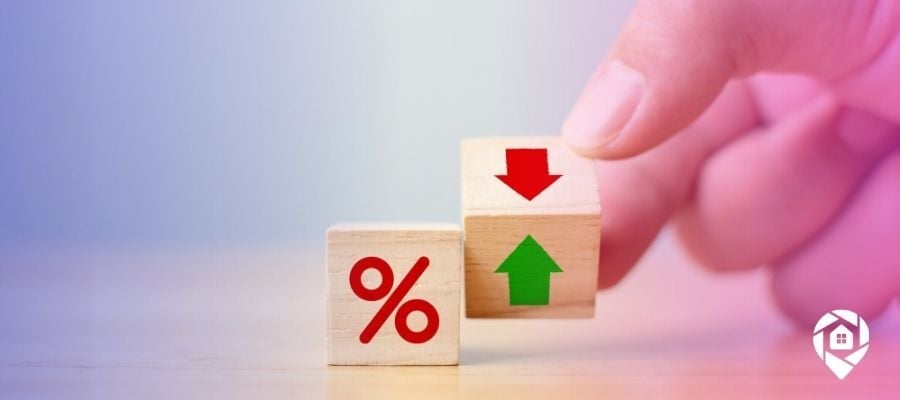
How to Maximize Your Rental Property Rate of Return

When it comes to real estate investing, one of the most important things to understand is return on investment (ROI). ROI shows you how much money you’re making compared to how much you spent.
If you’re investing in rental homes or apartments, knowing your rental property rate of return is key. It helps you figure out if your property is truly making a profit—or costing you money. The better your return, the more your investment can help you build long-term wealth.
Understanding Return on Investment
Return on Investment (ROI) is a simple way to measure how much money you earn from an investment compared to what you spent on it. In real estate, it helps you see if a property is actually a good deal.
Here’s the basic formula:
(Net Profit ÷ Total Investment Cost) × 100 = ROI %
Let’s break that down:
- Net Profit is what you make after subtracting all your expenses (like repairs, taxes, and insurance).
- Total Investment Cost includes everything you spent to buy and fix up the property.
For example, if you made $10,000 in profit and spent $100,000 on the property, your ROI would be 10%.
Knowing your ROI helps you compare different properties and make smarter choices. If you want to go deeper, check out this playbook on landing more real estate deals—it’s full of helpful tips.
Rate of Return in the Context of Rental Properties
The rate of return is a key part of measuring ROI for rental properties. It shows how much money you make each year from rent, compared to how much the property costs you overall. This is often called your rental property rate of return.
Several things can affect your return, such as:
- The location of the property
- Local property taxes
- Your upfront costs, like the purchase price and repairs
- Ongoing expenses like maintenance and management fees
For example, a rental home in a busy city might earn more income, but it could also come with higher costs. On the other hand, a property in a smaller town might be cheaper to maintain but bring in less rent. That’s why it’s important to look at all the numbers before making a decision.
Understanding how these factors work together helps you make smart choices and get the most out of your investment. A strong return means your property is doing its job—earning money and building long-term value.
How to Calculate ROI on Rental Properties
Once you understand ROI, the next step is knowing how to calculate it for a rental property. This helps you figure out if the property is making you money and when the investment will pay off, or if it is costing you more than it should.
To find your rental property rate of return, you’ll need two main numbers:
- Annual Rental Income – the total rent you collect in a year
- Total Investment Cost – everything you spent to buy and fix the property
This includes:
- Purchase price
- Closing costs
- Renovation or repair expenses
Next, subtract your yearly expenses (like taxes, insurance, and maintenance) from your rental income. What’s left is your net profit.
Now use the ROI formula:
(Net Profit ÷ Total Investment Cost) × 100 = Rental Return (%)
For example, if your net profit is $9,000 and your total investment was $100,000, your ROI—or rental return—would be 9%.
This simple calculation gives you a clear picture of how well your property is performing. The higher the percentage, the better your return, and the more income your rental is generating compared to its cost.
Variations of ROI Calculations
Not all ROI calculations are the same. Depending on your strategy, there are different ways to measure how much money your rental property is making.
For example, some investors look beyond just rental income. They also consider things like:
- Equity Pay Down – As you pay off your mortgage, you build ownership in the property. That equity adds to your overall return.
- Appreciation – If your property’s value goes up over time, that increase counts as part of your return.
- Cash Flow – This is the money left over each month after paying all expenses. Positive cash flow means your property is making money each month.
Some investors also use different timelines to calculate ROI—monthly, annually, or over the full time they plan to hold the property. These variations can give you a clearer picture of whether your rental is a strong long-term investment or just offering short-term gains.
Understanding these different types of returns helps you make better decisions based on your goals. Whether you're focused on monthly income or long-term growth, knowing which ROI method to use can guide your strategy.
Importance of Regularly Reviewing Your ROI
Just because your rental property has a good return now doesn’t mean it always will. Things can change—like property taxes, rent prices, or repair costs—and those changes can affect your rental property rate of return over time.
That’s why it’s important to review your ROI regularly, not just once when you buy the property. Here’s what to keep an eye on:
- Vacancy rates – If your property sits empty too long, your income drops.
- Property value – If the value rises, your return could improve. If it falls, your investment might not be as strong.
- Expenses – Insurance, taxes, and repairs can go up over time and lower your profit.
- Rental income – You may be able to increase rent if the market allows, which would boost your ROI.
By checking your numbers multiple times a year, you can catch problems early and make smart changes. Maybe you’ll decide to raise rent, refinance the mortgage, or even sell and reinvest somewhere better.
Keeping your ROI up to date helps you stay in control of your investment and make decisions that protect your bottom line.
Calculating Profit Margin on Rental Property
While ROI tells you how much return you’re getting on your investment, profit margin helps you understand how much of your rental income is actual profit. It’s another useful way to see how well your property is doing.
Here’s how to calculate profit margin on a rental property:
- Start with your annual rental income – This is the total rent you collect in one year.
- Subtract all your yearly expenses – This includes mortgage payments, property taxes, insurance, repairs, and any management fees.
- Divide your net profit by your total income – This shows you what percentage of your income is profit.
For example, if you collect $24,000 in rent in a year and spend $18,000 on expenses, your profit is $6,000. Divide that by your income ($6,000 ÷ $24,000), and your profit margin on rental property is 25%.
This number helps you compare different properties or spot problems. A low profit margin could mean you’re spending too much or not charging enough rent. A healthy margin shows your property is running efficiently and bringing in solid returns.
Intelligent Investing is All About Your ROI
In real estate, smart investing means knowing your numbers—and your ROI is one of the most important. Whether you’re just starting out or you’ve been investing for years, keeping track of your rental property rate of return helps you make confident decisions.
Markets change, expenses shift, and property values go up or down. That’s why it’s important to calculate, review, and adjust your numbers regularly. When you stay on top of your return, you can spot opportunities to improve your profits or avoid costly mistakes.
At the end of the day, successful rental property investing isn’t about guessing—it’s about making informed choices. With a clear understanding of your return, you can move forward knowing your money is working for you.
Frequently Asked Questions
What is a good rental property rate of return?
A good rental property rate of return usually falls between 8% and 12%, but it can vary based on location, property type, and market conditions. Higher returns often come with higher risks, so it’s important to balance both.
How do I calculate rental return?
To calculate rental return, subtract your annual expenses from your rental income, then divide the result by your total investment cost. Multiply by 100 to get the percentage for your annual rental rate of return.
Formula:
(Net Profit ÷ Total Investment) × 100 = Rental Return (%)
What’s the difference between ROI and profit margin on a rental property?
ROI looks at how much return you’re making compared to what you spent. Profit margin, on the other hand, shows what percentage of your income is actual profit. Both help you understand how well your investment is performing.
How often should I check my ROI?
It’s smart to review your ROI at least once a year, or whenever your expenses or rental income change. Regular check-ins help you stay on track and catch problems early.

About Samantha Ankney
Samantha is the Social Media Manager at DealMachine, where she oversees all social media strategies and content creation. With 4 years of experience at the company, she originally joined as a Media Specialist, leveraging her skills to enhance DealMachine's digital presence. Passionate about connecting with the community and driving engagement, Samantha is dedicated to sharing valuable insights and updates across all platforms.


